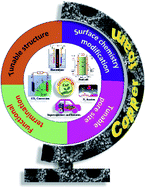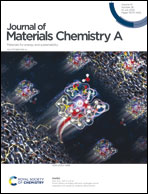The versatility of the dynamic hydrogen bubble template derived copper foam on the emerging energy applications: progress and future prospects
Abstract
The current review was conceptualised after realising the industrial relevance and enormous potential of nanostructured copper foams (Cuf) in the field of energy applications, as active electrode components, as a building block or even just as a dynamic current collector. Among the plethora of chemical and electrochemical synthesis approaches explored so far, the dynamic hydrogen bubble template (DHBT) technique has emerged as a promising, economical, and effective means of producing macroporous Cuf with nanostructured pore walls, integrated electrical conductivity and, most importantly, extensively accessible surface area. While a comprehensive repository on the versatility of the DHBT technique and its exploration in developing various monometallic or bimetallic films exists, very little attention has been paid to highlighting Cuf as an ambidextrous nanometal foam (NFM) model that has a potentially broad spectrum of applicability in all fields of energy applications, including energy storage and electrocatalysis. Herein, we review the current state of the art approaches on the synthesis of DHBT-derived Cuf and its suitable applications in various energy devices. We also highlight the technological bottleneck of realising the theoretical competence of DHBT-derived Cuf in a commercial setup, and attempt to address the issues for future relevance.

- This article is part of the themed collection: 2022 Journal of Materials Chemistry Lectureship shortlisted candidates


 Please wait while we load your content...
Please wait while we load your content...